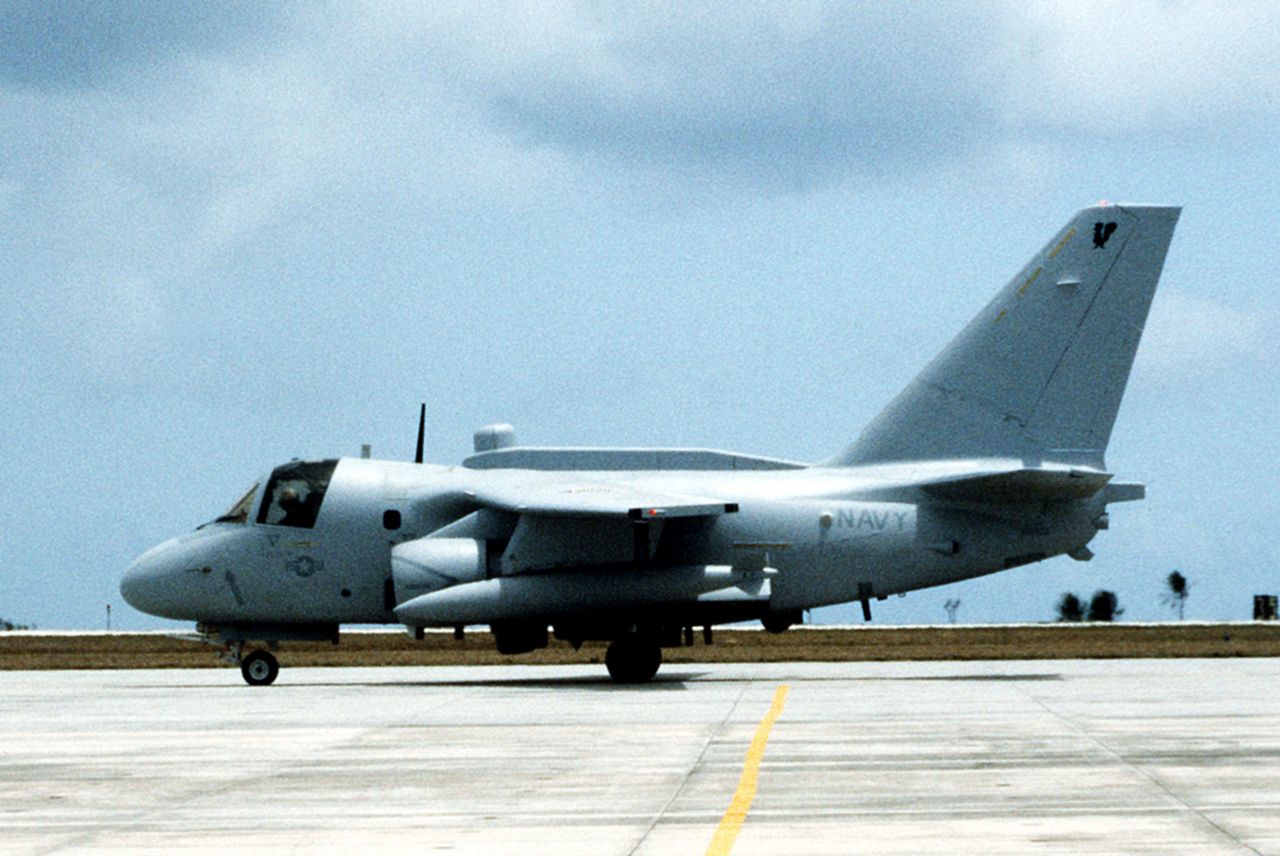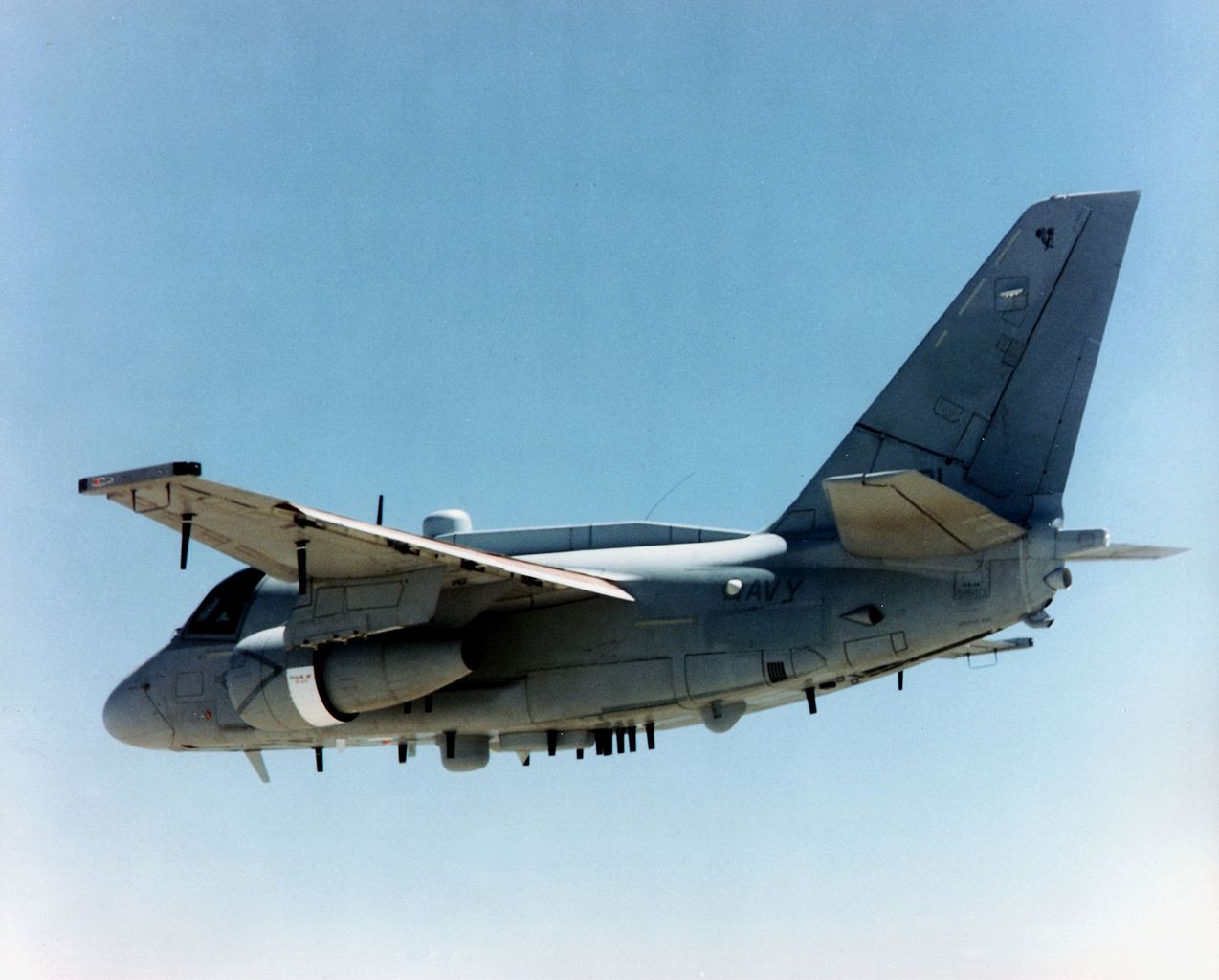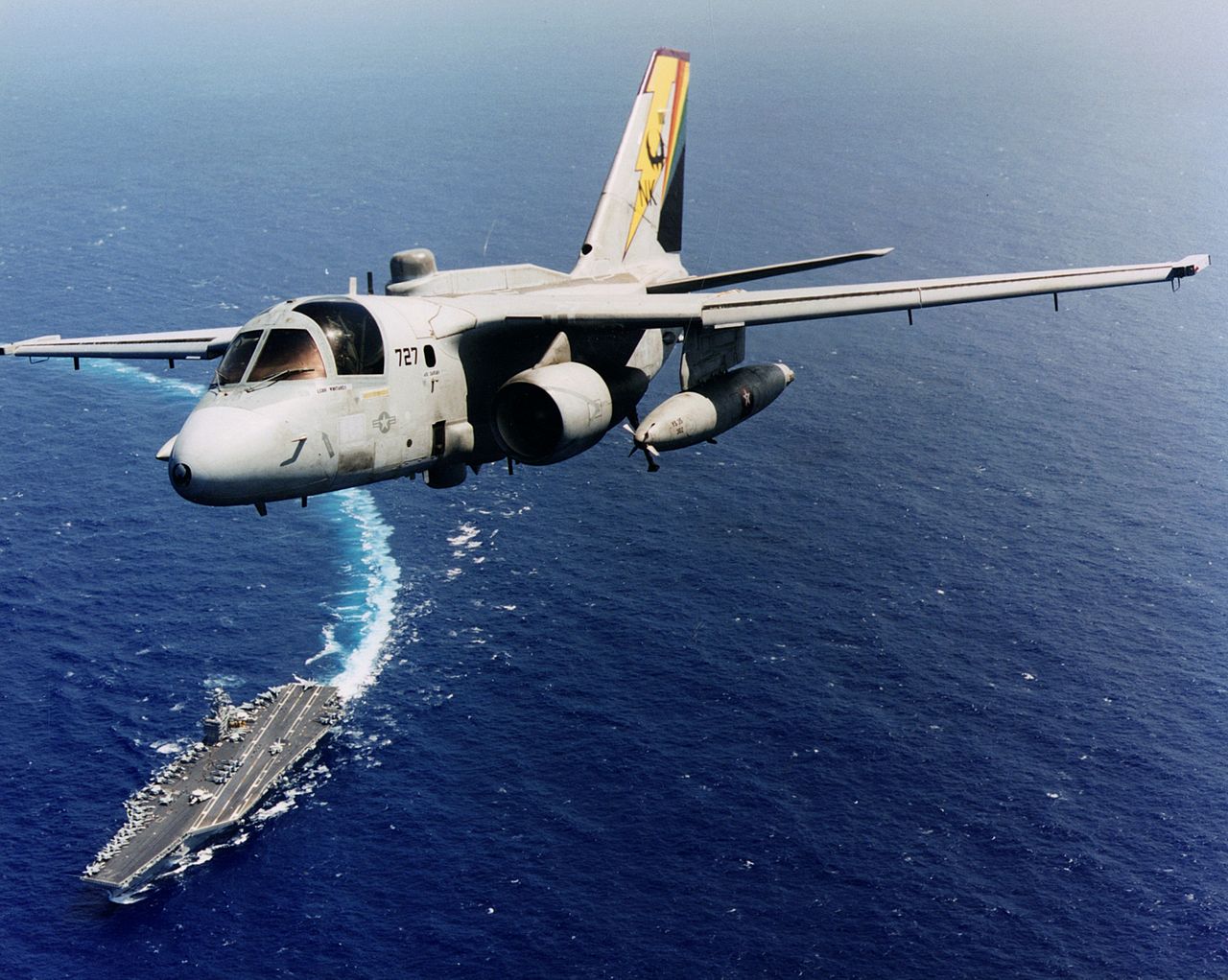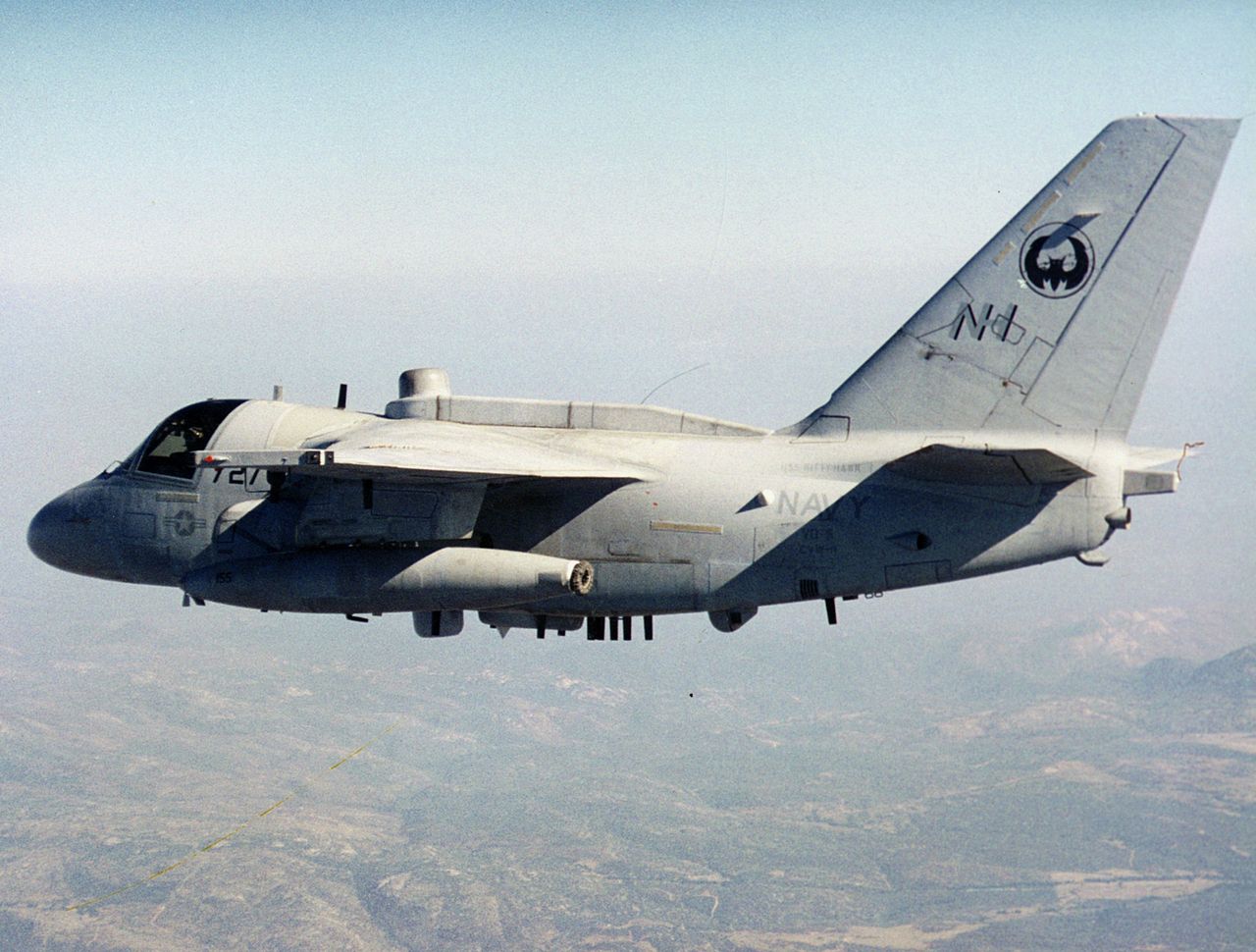This Replacement For The Venerable EA-3B “Electric Whale” Only Served For Eight Very Busy Years
In 1991, the last Navy EA-3B Skywarrior was retired after 40 years of service. The last Douglas EA-3B Electric Whale, 146448, assigned to Fleet Air Reconnaissance Squadron TWO (VQ-2) Batmen, went to the boneyard later that year.
The Lockheed ES-3A Shadow was intended to replace the venerable EA-3B and perform its electronic reconnaissance and countermeasures/signals intelligence (SIGINT) work aboard US Navy aircraft carriers. Over two years, between 1991 and 1993, Lockheed modified 16 existing S-3A Viking airframes to ES-3A Shadow standard.
Only the six US-3A Viking CODs joined the ES-3As as production variants of the base S-3.

Shadowy Black Boxes Aboard
Though literally packed to the gills with electronic black boxes and festooned with lumps, bumps, and blades (more than 60 of them) the Shadow’s ability to do its job was provided in large part by the Aries II suite of electronics used in Lockheed’s land-based EP-3E Orion. Though the standard Viking antisubmarine warfare (ASW) electronics suite was removed, including the magnetic anomaly detector (MAD) boom in the tail, the Shadow retained the Viking’s ability to pass gas and was used in the airborne tanker or “Texaco” role at times.

Still Gotta Texaco
Crewed by a pilot, a naval flight officer (NFO) in the co-pilot seat, and two systems operators, the advanced Aries II sensor, navigation, and communications systems allow the Shadow’s four-person crew to collect and distribute high-quality data and information through a variety of channels to the carrier battle group. This gave the battle group commander a clear picture of potential airborne, surface, and sub-surface threats.
Missions flown by the VQ detachment included over-the-horizon detection, classification, and targeting using passive sensors, strike support, war at sea, reconnaissance, and, of course, airborne refueling via “buddy” store.

They Sure Did Get Around
Only two squadrons operated the 16 Shadows: Fleet Air Reconnaissance Squadron FIVE (VQ-5) Sea Shadows and VQ-6 Black Ravens. VQ-5 was based initially at Naval Air Station (NAS) Agana on Guam but moved to Naval Air Station (NAS) North Island at San Diego during the mid-1990s. VQ-6 was based at NAS Jacksonville in Florida on the East Coast. Both squadrons were assigned eight airframes, which were usually split into four two-aircraft detachments for their deployments aboard aircraft carriers.

Sudden and Ignominious End
VQ-5 participated in operations off Korea in 1994 and off Taiwan during the Third Taiwan Strait Crisis in March of 1996. Operation Southern Watch and Operation Desert Fox provided the Sea Shadows with plenty of work, but Desert Fox was the last hurrah for the Sea Shadows. They were disestablished shortly after returning from their final deployment aboard USS Carl Vinson (CVN-70). VQ-6 deployed 13 times aboard seven different aircraft carriers and worked Bosnia, Southern Watch, and Desert Fox. The Black Ravens, too, were disestablished after their last deployment aboard the carrier USS Enterprise (CVN-65).

What Were They Thinking?
The ES-3A Shadows were decommissioned by the end of September 1999 after only eight years in service, primarily because the cost of upgrading the Shadow’s mission equipment to retain the ability to communicate with other (read newer) SIGINT assets. Rather than update the Shadow, it was replaced instead by the Lockheed EP-3E Aries II.
By the end of 1999, both VQ-5 and VQ-6 had been disestablished, and their aircraft sent to the AMARG boneyard. At first, the aircraft were stored in ready reserve status, but by 2003, their parts were needed to keep their by-then short-lived S-3B Viking cousins in the air. Despite their disproportionately high sortie rate, no ES-3As were lost to mishaps during their short but intense careers.


Great article! I flew the ES-3 in VQ-5 from 1994-1997. It was a very cool jet to fly. You had lots of toys track the bad guys.
I worked on the ES-3A when the squadron was at Cecil Field ( Jax ) Nice article, thanks for the stroll down memory lane.